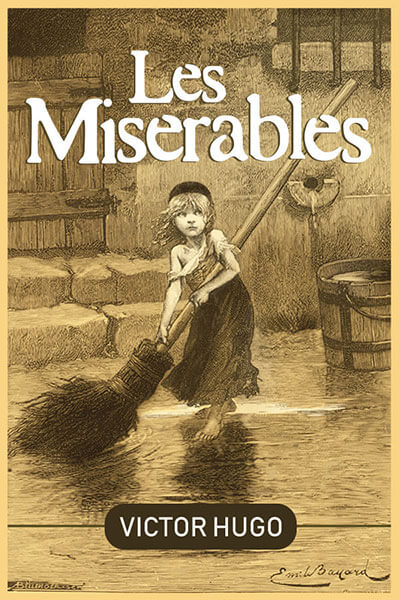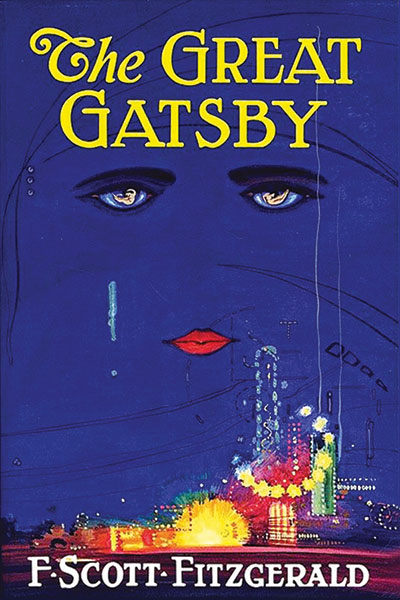Library
Crime and Punishment, by Fyodor Dostoevsky
One of the greatest philosophers of all times, Fyodor Dostoevsky suffered throughout his life and was studying the subject of suffering closely. Dostoevsky said: “Pain and suffering are always inevitable for a large intelligence and a deep heart. The really great men must, I think, have great sadness on earth.” The first American edition of the author’s masterpiece, Crime and Punishment was published in New York in 1886. The two years before writing it had been bad ones for the author. His wife and brother had died; the magazine he and his brother had started, Epoch, collapsed under its load of debt; and he was threatened with debtor's prison. He received an advance for an unwritten novel, and fled to Wiesbaden, hoping to win enough at the roulette table to get himself out of debt. Instead, he lost all his money.
Learn moreThe War of the Worlds, by HG Wells
Long before Steven Spielberg made it into a movie and Tom Cruise starred in it, the War of the Worlds was influencing the greatest minds of our time: Robert H.Goddard, inspired by the book, invented both the liquid-fuelled rocket and multistage rocket, which resulted in the Apollo 11 Moon landing 71 years later. H.G. Wells wrote this incredible story between 1895 and 1897 and it is said to be one of the earliest stories to detail a conflict between mankind and an extraterrestrial race. "Yet across the gulf of space, minds that are to our minds as ours are to those of the beasts that perish, intellects vast and cool and unsympathetic, regarded this earth with envious eyes, and slowly and surely drew their plans against us".
Learn moreUlysses, by James Joyce
Hailed as a masterpiece when it debuted in 1922, the 700-plus-page stream-of-consciousness tale has lost none of its charm. Some say it is impossible to read. The others argue, that Ulysses is the greatest English book of the 20th century. “Love loves to love love.” - said the author. The first edition of James Joyce's novel that follows Dubliner Leopold Bloom for a day on June 16, 1904, was published by a bookstore, in Paris, which had never printed a book before, and never would again. The book was printed in bright “Aegean” blue wrappers, as Joyce specified himself. 750 copies were the normal issue; 150 copies were printed on a larger format, handmade paper; 100 copies were signed by Joyce. Among the people who first purchased the edition were Gertrude Stein and Ernest Hemingway, who purchased several copies. None of the 1,000 were allowed in the United States. We have seen it on sale for $75,000 at Christie’s. It is very popular among collectors.
Learn moreCandide, by Voltaire
A case against Optimism, Candide is a satirical novel published in 1759. It is the best-known work by Voltaire. He wrote it in three days, and many generations since then have found that its laughter does not grow old. As expected by Voltaire, Candide has enjoyed both great success and a great scandal. Immediately after its secretive publication, the book was widely banned. However, the novel has since inspired many later authors and artists to mimic and adapt it.
Learn moreDon Quixote, by Miguel de Cervantes
The Ingenious Gentleman Don Quixote of La Mancha is a Spanish novel by Miguel de Cervantes. It was published in two parts, in 1605 and 1615. By imitating his admired literary heroes, Don Quixote, announces himself a knight and finds new meaning in his life: aiding damsels in distress, battling giants and righting wrongs… mostly in his own head. And very kindly. It is a book about books, reading, writing, idealism vs. materialism, life … and death. A founding work of Western literature, it is often labeled "the first modern novel" and many authors consider it to be the best literary work ever written.
Learn moreAnna Karenina, by Leo Tolstoy
"Anna Karenina" is a novel by the Russian author Leo Tolstoy. It was first published in book form in 1878. Many writers consider "Anna Karenina" the greatest work of literature ever. Tolstoy himself called it his first true novel. It was initially released in serial installments from 1873 to 1877 in the periodical "The Russian Messenger". A complex novel in eight parts, with more than a dozen major characters, it is spread over more than 800 pages (depending on the translation and publisher), typically contained in two volumes. It deals with themes of betrayal, faith, family, marriage, Imperial Russian society, desire, and rural vs. city life. The novel has been adapted into various media including theatre, opera, film, television, ballet, figure skating, and radio drama. It's been said that the plot was inspired by the story of a real woman. Anna Stepanovna Pirogova was the mistress of one of Tolstoy's friends. When she learned her lover had been neglecting her for his children's German governess, she ran away and wandered about the countryside for days.
Learn moreThe Picture of Dorian Gray, by Oscar Wilde
Oscar Wilde’s only novel is considered by many to be his finest work. The Picture of Dorian Gray was first published in 1890, in a magazine whose editor, worried it was indecent, cut about five hundred words from it without informing its author, Oscar Wilde. Wilde insists in his Preface, “There is no such thing as a moral or an immoral book. Books are well written or badly written. That’s all.” When critics attacked the work for its immorality, Wilde responded, “Leave my book, I beg you, to the immortality that it deserves”.
Learn moreWar and Peace, by Leo Tolstoy
Leo Tolstoy's "War and Peace" is a novel published in 1869. It is regarded as one of Tolstoy's finest literary achievements and remains a classic of world literature. "War and Peace" chronicles the French invasion of Russia and the impact of the Era of Napoleon on Tsarist society through the stories of five Russian aristocratic families. However, Tolstoy said "War and Peace" is "not a novel, even less is it a poem, and still less a historical chronicle." Large sections, especially the later chapters, are philosophical discussions rather than narrative. Tolstoy also said that the best Russian literature does not conform to standards and hence hesitated to call "War and Peace" a novel. Instead, he regarded Anna Karenina as his first true novel. After countless adaptations, and translations it remains of the most popular and grand stories of all.
Learn more










